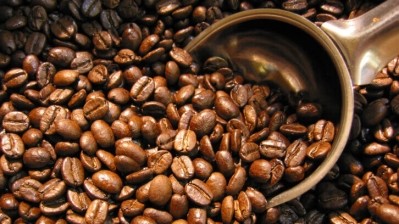Spilling the tea (and coffee) on natural beverage trends

“Today’s consumer is increasingly looking to ‘have it all’ – great-tasting beverages with sustainably-sourced ingredients/packaging that are ‘guilt-free’ (i.e. no negative impact on their health) or better yet provide active functional benefits, all at a cost that aligns with their budget," Sian Edwards, director of strategy and insights, Finlays, told FoodNavigator-USA.
She acknowledged, “[ticking] off all of these trends while creating a product proposition that feels coherent,” can be a challenge, but, she added, “the opportunity of doing so can equal major sales growth and brand loyalty with consumers.”
She explained that coffee and tea are two platforms well positioned to meet this demand in part because they offer functional benefits, such as energy or mood management, are perceived as healthy and provide a platform for innovative flavors that appeal to modern consumers.
Differentiating RTD tea through flavor and diverse functions
Within tea “there has been a renewed interest in the RTD tea market and sales have started to show increased growth in the market. RTD tea brands entering the natural/functional beverage category can differentiate themselves by using other functional ingredients to support interest in growing health topics like sleep, brain function, hydration and relaxation,” added Stacy DeMars, marketing manager, brand, Finlays.
RTD sparkling tea brand, AMAZ features yerba mate as its caffeine source and adaptogens that promise mood-boosting effects and features fruity and tropical flavors like Lemon Ginger, Peach Mango and Blueberry Acai. While Oobli differentiates itself using sweet proteins as its gut-friendly sweetener in flavors like Holy Lemon!, Peachy Plz and Mango Yo, and an ideal beverage for consumers with diabetes.
DeMars added, “The standard such as lemon and peach still drive a good portion of the market along with half and half lemonade and tea. We have seen an increase in sweet and extra sweet tea over the past few years but as consumers become more focused on health and wellness there has been emerging floral flavors like elderflower, orange blossom and rose in more teas along with more interest in warming spice flavors like acerola, chai or vanilla.”
Herbal and floral flavors also have grown in popularity, particularly with tea, allowing “product developers and consumers to explore flavor combinations,” Edwards said.
Focusing on energy and flavor-forward attributes for coffee
Within coffee, nostalgic, indulgent flavors like s’mores, cookies n’ crème and toffee are popular, alongside staples like vanilla and chocolate.
Brands like Monster Java, High Brew and Super Coffee indicate the energy and flavor-forward positioning of RTD coffee.
While cold brew concentrates like Explorer, Chameleon and Pop & Bottle offer convenience and customization for at-home baristas seeking a personalized experience.
The category blurring within coffee has seen high activity as “brand owners look to harness the natural caffeine and positive consumer perceptions of coffee to develop a new type of energy beverage,” Edwards explained.
Creating “incremental and nimble innovation” across brand portfolio
She recommends that as brands explore flavor combinations and how best to create a compelling consumer proposition that they build product models “around incremental and nimble innovation.?
She added, “Brands can stay ahead of the curve by … establishing a core range of products that are both accessible and exciting, and then be responsive enough to build on the solid core with limited time offerings (LTOs), seasonal products and trial innovations in response to fast-consumer trends.”

























